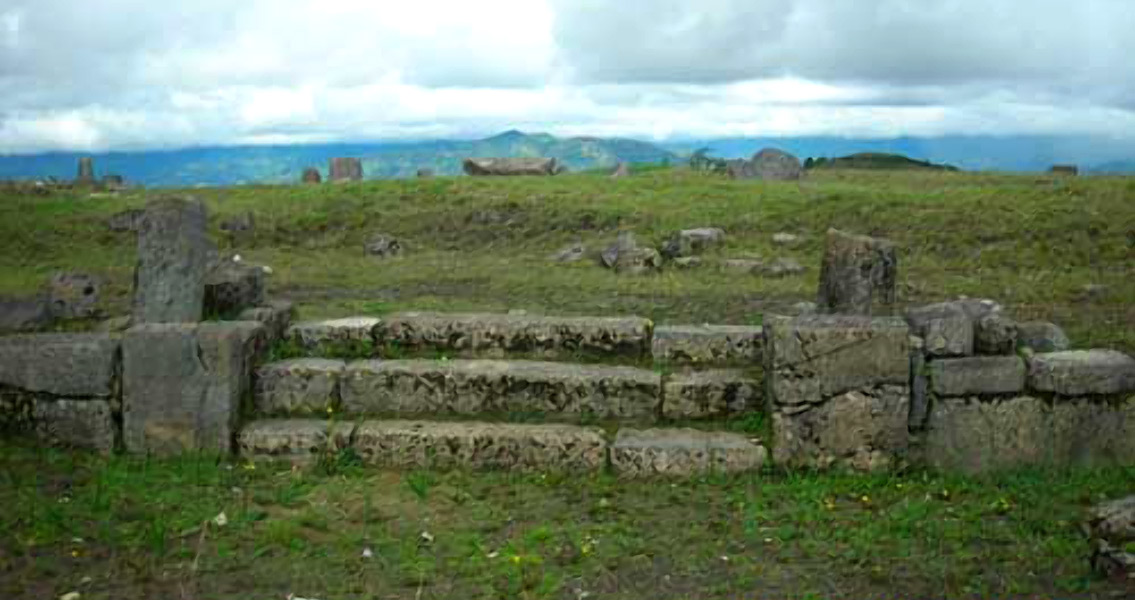<![CDATA[A tomb containing the remains of what are believed to be two priests has been excavated at a temple complex near the town of Pacopampa in Peru. The site dates back to the first millennium BCE, when the area was inhabited by the Pacopampa culture, a pre-Inca civilisation. This is the second tomb at the site that has been excavated, following the discovery of the Lady of Pacopampa in 2009. The two discoveries are significant in that they reveal evidence of a socially stratified society at a time that archaeological consensus considered egalitarian in the region. The two bodies in the tomb were arranged in such a way that one faced north and the other south, both folded in a foetal position, Ancient Origins reports citing Peruvian media. Their skulls bore evidence of deformation, which was a sign of high status in ancient Andean cultures. In addition, the archaeologists working at the site found a necklace of 25 elaborate gold beads as well as a black ceramic vessel in the shape of a serpent with the head of a jaguar. This vessel’s shape inspired the name given by the researchers to the two skeletons: the Serpent Jaguar priests. Besides the artefacts, the team also found traces of mineral pigments in front of one of the skulls. These included cinnabar, a red mineral, malachite, which is green, dark brown hematite, black magnetite, and white calcite. The lead researcher of the Archaeological Project of Pacopampa, Yuji Seki from the Ethnological Museum in Japan, told local media that the burial site was located right next to the east side of a square courtyard which was probably used for ceremonial gatherings. Based on this location, the artefacts found in the tomb and the shape of the skulls, it is reasonable to suggest that the individuals buried there may have directed these gatherings, which means they were probably priests. The significance of the colour pigments has not been determined yet but there is reason to believe they were also an indication of high status, as they are similar to the pigments found in the tomb of the Lady of Pacopampa. The Lady of Pacopampa tomb was located beneath the main platform of the temple, covered with rocks, the En Peru website reported back in 2009. When excavation works at the site started, the researchers believed the Pacopampa culture and its contemporaries lived in egalitarian communities but this belief changed when the Lady of Pacopampa’s remains and her tomb were studied. For one thing, her skull bore marks of deliberate deformation aimed to elongate it. This was done as soon as a high-status baby was born, by attaching pieces of wood to the skull and tying them tightly. In this case, the procedure continued until the child was about three years old, according to Kazuhiro Uzawa, the scientist who examined the skull. Analysis of the bones established that the woman died between the ages of 30 and 40 and that she was taller than the height of her contemporaries, standing at 1.55m as opposed to the 1.50m average. Her teeth and bone structure also suggested she had a better diet than her contemporaries, which, coupled with the artefacts found in the tomb, including a pair of long gold earrings and a number of beads, reinforced the belief that she was a member of the Pacopampa elite. Since Seki’s team started working at the site, they have uncovered five tombs, but only these two have so far been excavated, for lack of sufficient funding. Image courtesy of Wikimedia Commons user: Josef73]]>
Priest Tomb Unearthed at Pre-Inca Temple in Peru
